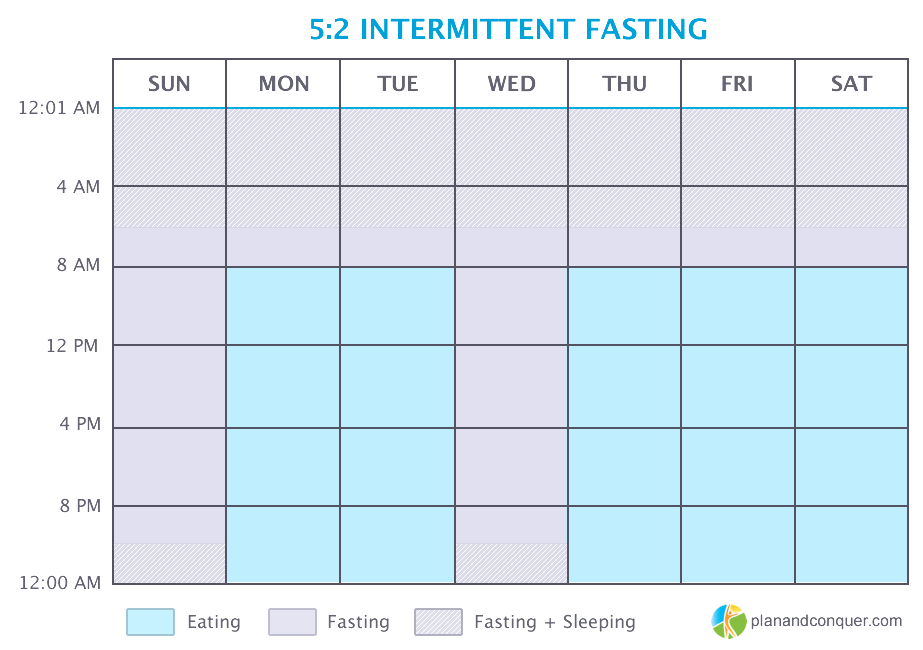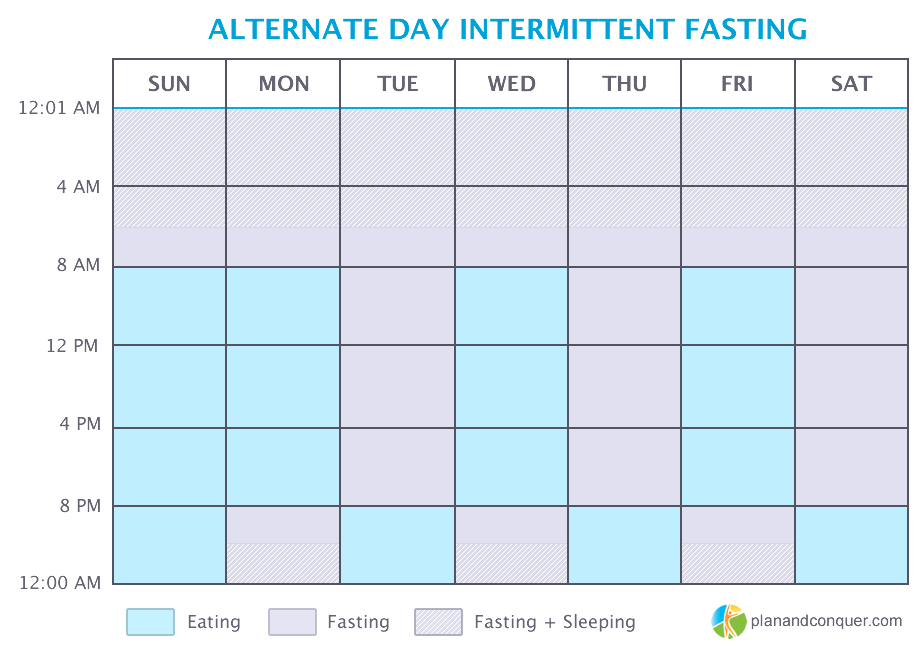Intermittent Fasting (IMF) is a popular health approach and it has been widely used for thousands of years by many cultures throughout the world.
In the past several years it has gained in popularity with health enthusiasts and celebrities for mainly weight loss but also the health advantages it offers.
The common misconception is that “fasting” is used for religious practice. We are recently understanding the science and health advantages when one’s body goes through fasting periods.
So what is Intermittent Fasting?
Intermittent Fasting at its core isn’t a diet but an alternate eating pattern between fasting and eating periods. The eating window is restricted to a shorter period of time leaving the remaining time for one’s body to heal.
As previously mentioned, most people do Intermittent Fasting to lose weight, but IMF isn’t like the typical diet. Compared to the popular diets you see today, which require a low-calorie food intake and workout regimen, IMF is a biological process where your body naturally recovers along with weight loss.
How Does Intermittent Fasting Work?
Our bodies are either in one of two states, the “fed state” or the “fasted state”.
Fed state is when your body uses calories consumed in the form of glucose stores as energy. This is the default energy source our body uses.
The fasted state is when your body no longer has glucose as energy and in a sense, is forced to find another form of energy in the form of fat stores. It typically takes 10 – 12 hours after your last meal before entering a fasted state.
Glucose stores are easily accessible but limited in storage – any excess in glucose stores is added to our fat stores, which have unlimited storage… hence, “weight gain”.
With readily available food, i.e. McDonald’s in every corner, snacks in our pantry, and leftovers in our refrigerator, our eating pattern has changed… and not for the better. Because of this, instead of eating 3 meals a day, we are eating 6+ meals a day, and the reason our glucose stores are readily available without the need to use fat stores for energy.
Why Are We Less Healthy Than Our Ancestors?
“Our early ancestors ate less frequently with longer breaks between meals because of lower food abundance. The practice of Intermittent Fasting emulates similar eating patterns, which allows our bodies to do what it was meant to do… self-heal with the by-product being weight loss.”
Intermittent Fasting allows eating patterns with longer breaks between meals. Because of this, it depletes the glucose stores and forces our bodies to utilize fat stores.
When we use our fat stores more for energy, resting between meals allows our bodies to heal themselves, resulting in many health advantages including weight loss is the most common benefit.
During a fasted state you deprive the glucose stores forcing your body to switch energy sources. Switching energy sources is not easy for most people. If you consistently use glucose stores, anytime it gets low, your body tells us we need to eat (hunger cravings).
If you don’t utilize your fat stores often, your body will send signals to you to eat. At some point, your body will go into survival mode and look for an alternative energy source (fat stores). If you consistently fast often, it becomes easy to switch this energy source as your body is accustomed to it.
The Many Health Benefits of Intermittent Fasting
Intermittent Fasting has been considered the greatest self-healing method. Not only do you benefit from natural and healthy weight loss, it provides a number of optimal health advantages.
Intermittent Fasting Can Help:
- With weight loss
- Increase metabolism
- Improve insulin sensitivity
- Decrease hunger
- Improve cardiometabolic health
- Improve learning and memory
- Reduce the risk of cancer
- Initiate cellular repair process
- Improve sleep
- Reduce inflammation
- Reduce insulin resistance
- Reduce LDL cholesterol
- Increase brain hormone
- Promote cardiovascular health
- Prolong lifespan
Intermittent Fasting Schedules
With Intermittent Fasting, you have different approaches on how you want to execute this tactic to maximize the many health benefits IMF provides. It’s important you decide on the approach that will work with your schedule. For example, if you enjoy having lunch and dinner with friends and family, then the 16:8 schedule might be the better approach.
16:8 – Daily Intermittent Fasting Schedule
The 16/8 method is one of the most common and possibly the easiest approaches.
It involves 16 hours of fasting and an 8-hour eating window. The most common approach is to eat from 12:00 PM to 8:00 PM, with the remaining time left for fasting.
If 12:00 PM to 8:00 PM doesn’t work with your schedule, feel free to adjust accordingly so you fast for 16 hours.
Here’s an example of a 16:8 daily intermittent fasting schedule:
8:00 AM: Breakfast (Start of the 8-hour eating window)
- Healthy breakfast with balanced nutrients.
12:00 PM: Lunch
- Nutritious lunch with proteins, vegetables, and complex carbs.
3:00 PM: Snack (optional)
- A small, healthy snack to keep energy levels stable.
6:00 PM: Dinner
- Balanced dinner with proteins, veggies, and healthy fats.
8:00 PM: End of Eating Window (Start of the 16-hour fasting period)
- No calorie intake until the next morning.
8:00 AM (Next Day): Breakfast
- Repeat the cycle.

5:2 – Fast Diet
5:2 Intermittent fasting is a type of intermittent fasting regimen that involves eating regularly for 5 days of the week and restricting calorie intake for the remaining 2 non-consecutive days. On fasting days, individuals typically consume a significantly lower number of calories, usually around 500 to 600 calories, which is approximately 25% of their regular caloric intake.
The idea behind 5:2 intermittent fasting is that by reducing calorie intake on the fasting days, the body enters a state of caloric deficit, promoting weight loss and potential health benefits. On non-fasting days, individuals can eat their regular diet without any specific restrictions.
Here’s an example of a 5:2 daily intermittent fasting schedule:
- Monday: Regular eating day (normal calorie intake).
- Tuesday: Regular eating day (normal calorie intake).
- Wednesday: Fasting day.
- Thursday: Regular eating day (normal calorie intake).
- Friday: FRegular eating day (normal calorie intake).
- Saturday: Regular eating day (normal calorie intake).
- Sunday: Fasting day.

Alternate Day Intermittent Fasting
Alternate Day Intermittent Fasting, also known as Alternate-Day Fasting (ADF), is a type of intermittent fasting in which individuals alternate between fasting days and regular eating days. The fasting days involve significantly reducing calorie intake or complete fasting, while the regular eating days involve consuming a normal amount of calories without any specific restrictions.
There are different variations of Alternate Day Intermittent Fasting, but one common approach is the 24-hour fast, where individuals fast for a full 24-hour period every other day.
Here’s an example of an “Alternate Day” intermittent fasting schedule:
- Day 1: Regular eating day (consume normal calories).
- Day 2: Fasting day (consume very low calories or no food at all).
- Day 3: Regular eating day (consume normal calories).
- Day 4: Fasting day (consume very low calories or no food at all).

Weekly Intermittent Fasting
Weekly Intermittent Fasting, also known as the 5:2 Intermittent Fasting variation, is a type of intermittent fasting plan where individuals fast for two non-consecutive days each week and eat normally on the remaining five days. During the fasting days, calorie intake is significantly reduced, typically to around 500-600 calories per day, while on regular eating days, individuals consume their usual caloric intake without specific restrictions.
The schedule for Weekly Intermittent Fasting might look like this:
- Monday: Fasting day.
- Tuesday: Partial fasting day.
- Wednesday: Regular eating day (consume normal calories).
- Thursday: Regular eating day (consume normal calories).
- Friday: Regular eating day (consume normal calories).
- Saturday: Regular eating day (consume normal calories).
- Sunday: Regular eating day (consume normal calories).

Helpful Tips to Succeed with Intermittent Fasting
Intermittent Fasting has been a popular practice for thousands of years throughout the world and is used by almost all religions. But, in the past several years, we are discovering the many health benefits it provides along with natural weight loss.
I won’t lie, the first few weeks of fasting are going to be tough, both physically and mentally. The GOOD NEWS… once you get past the first few weeks, it will become much easier as your body has adjusted to switching between different energy sources. Use the following tips below to give yourself every chance to succeed and experience the benefits of this long natural process to optimal health.
Tip 1: Drink Water
As soon as you wake up, drink water! An empty stomach will make you feel hungry. Staying hydrated should help eliminate some of the hunger that appears first thing in the morning. Remember, after sleeping, you may wake up dehydrated. And if you’re dehydrated, your body may send you thirst signals, which feel almost identical to hunger signals. It helps me to have something with taste, so I add a lemon, lime, or orange wedge to my daily water bottle.
Tip 2: Drink Coffee
Caffeine is a natural appetite suppressant and will help keep your appetite at bay. Just make sure you consume any beverages with stimulants a few hours before bedtime, otherwise, you may be awake all night long. Avoid caffeinated low-calorie soft drinks. They have loads of artificial sweeteners and will only sabotage your weight loss efforts.
Tip 3: Stay Busy
My grandma Violet always says, “busy hands are happy hands.” And when you’re busy, you will not be concentrating on food or hunger. I actually found I was more productive and had more energy when my stomach wasn’t stuffed. It is common to believe you are hungry when you feel bored. Keeping your brain distracted can prevent it from believing that your body is hungry.
Tip 4: Start Slowly
I cannot emphasize this enough. For me, the best way to begin integrating an intermittent fasting plan into my lifestyle was to slowly delay breakfast. Too often, getting up and grabbing something to eat is a habit, not a need. I know many believe that breakfast is the most important meal of the day, and that may be true for children. But I found that by delaying eating in the morning, I was more successful in my fasting program.
Tip 5: Stay Positive
As with many things, the first time is the hardest. But fasting gets easier after two or three sessions. It took me a few weeks of intermittent fasting to get in the groove. Now I actually look forward to giving my body a rest from eating! Allow yourself at least two months to fully adapt and experience all the health benefits of fasting.
Resources:
- http://ibimapublishing.com/articles/ENDO/2014/459119/
- https://www.scientificamerican.com/article/how-intermittent-fasting-might-help-you-live-longer-healthier-life/
The information provided on this website is for general informational purposes only and is not intended as medical advice. It is not a substitute for professional medical advice, diagnosis, or treatment. Always seek the advice of your physician or another qualified healthcare provider with any questions you may have regarding a medical condition.
If you suspect you have a medical problem or are experiencing any symptoms, promptly contact your healthcare provider. Do not disregard professional medical advice or delay in seeking it because of something you have read on this website.
The website owners, authors, and publishers are not responsible for any adverse effects or consequences resulting from the use of the information provided on this website. By using this website, you agree to the terms and conditions outlined in this medical disclaimer.



